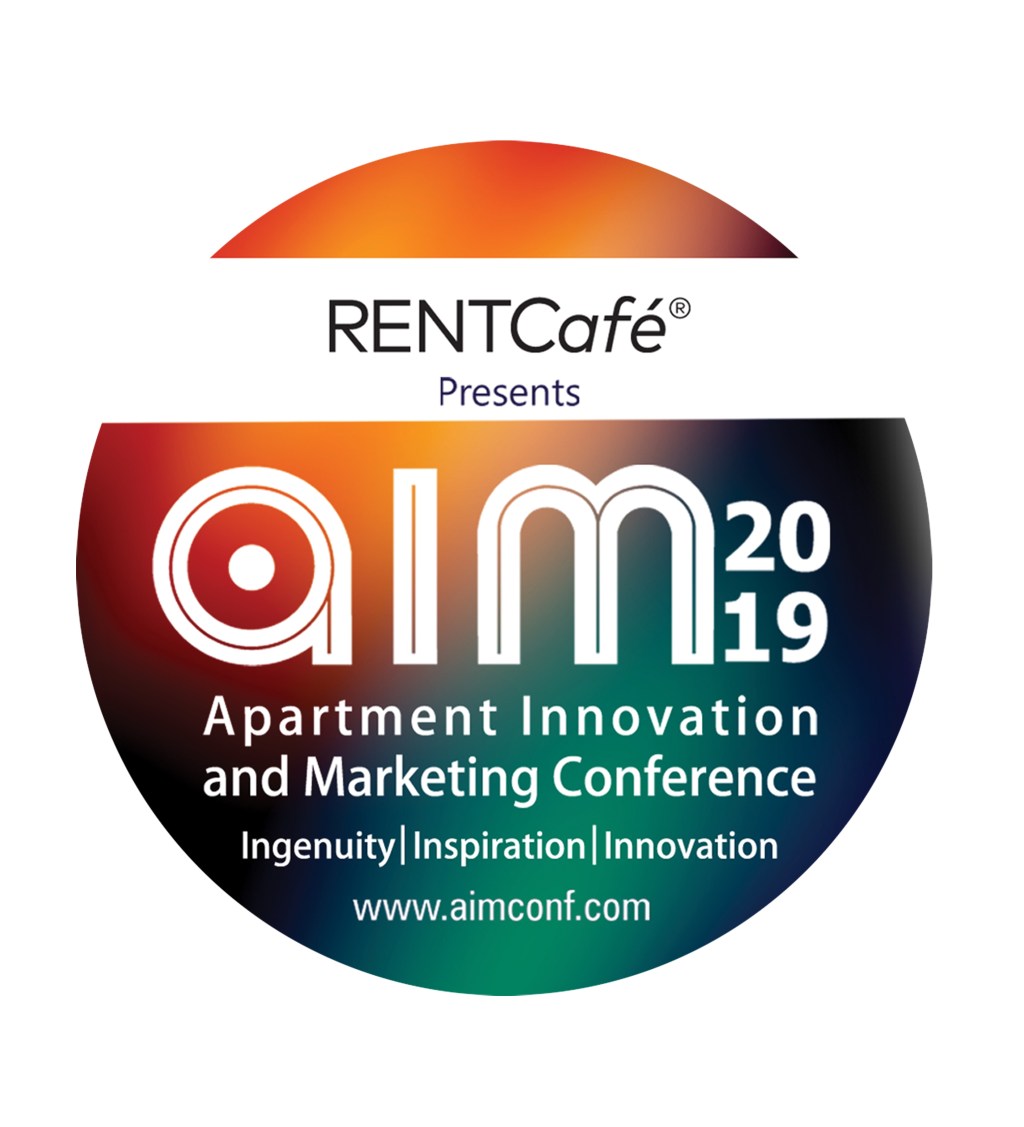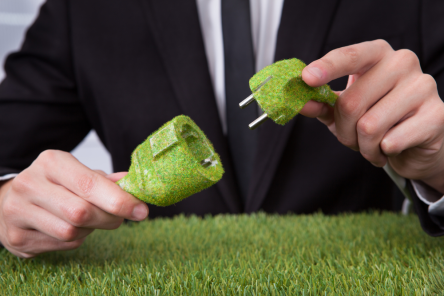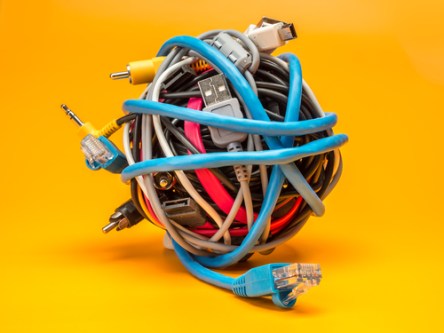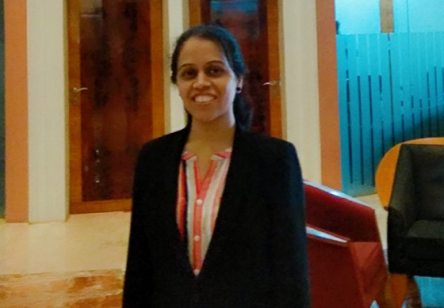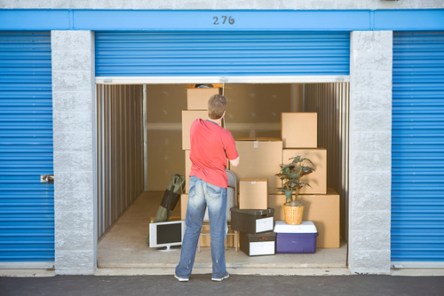Did you know that the average commercial building wastes 30% of the energy it consumes? Or that energy costs will rise as much as 60% in areas of the U.S. by 2028? It’s true, according to an analysis and calculation of Yardi consolidated property data. These facts should be red flags for property management companies without an energy strategy in place. Luckily, adopting an energy strategy is not as daunting as it may seem. In fact, taking incremental steps towards a comprehensive strategy can generate measurable savings in a matter of weeks with a relatively modest investment. Here are five reasons why an energy strategy is good business: Reduced costs Operating expenses such as utilities and maintenance are easy first targets for reduction through an energy strategy. By taking advantage of usage data and trends, property managers can quickly identify excessive usage, lower maintenance costs and identify benchmarks for energy consumption across a portfolio of properties. Increased value Assets that cost less to operate and generate higher rents quickly become more valuable. An energy strategy promotes both savings and revenue by reducing operating costs, reducing the need for rental concessions, making properties more marketable and, as a result, increasing potential net operating income. Efficient accounting The benefits of automating property management processes such as payment processing, procurement, vendor management, etc., are now viable for energy management. Gone are the days of a stack of paper utility bills waiting to be opened and paid. Automated utility expense management sends digital invoices to accounting staff and mines data from smart metering equipment to validate usage. With a relatively low upfront investment, property managers can reduce duplicate payments, avoid late fees and be confident that their utility spend is accurate. Happy tenants Doing business in a building that is LEED certified or meets ENERGY STAR® benchmarks can make a tenant feel proud, comfortable and socially responsible. They’re also less likely to call for maintenance with modern, energy efficient equipment servicing their building. That satisfaction reduces tenant turnover and increases competition for your space. Happy investors A successful energy strategy demonstrates to investors that your organization is proactively maximizing occupancy and revenue, and minimizing operating expenses. It’s also a great way to reassure investors that your properties are working to achieve local, state and federal government energy conservation goals, as well as boosting Environmental, Social and Governance scores for socially conscious investors. Need help getting started? Start with a focus on utility expense management as an approachable first step with low upfront investment required. From there, you may take bigger steps, such as energy intelligence at the property level with real time metering, ENERGY STAR benchmarking and prescriptive alerts for any property in your portfolio. The next level of investment is characterized by advanced energy automation in HVAC equipment, fault detection, diagnostics and demand management. No matter which level of strategy you take, the potential return on investment is tangible and may be evident as soon as your next utility invoice. Yardi Pulse clients have seen as much as 5% annual savings in energy costs with the first two incremental steps alone (utility expense management and energy intelligence). Annual energy savings of up to 15% or more are expected for properties that implement further energy automation measures. If you are a current Yardi Voyager user, contact our team for a complementary consultation. We’ll do an analysis to compare your costs with benchmarks. It’s a simple way to get an idea of the potential savings that an energy strategy can deliver to your...
AIM 2019
Official Rule
OFFICIAL RULES 2019 Yardi at AIM Sweepstakes NO PURCHASE NECESSARY. PURCHASE WILL NOT ENHANCE CHANCES OF WINNING. Sweepstakes is open only to legal residents of the 50 United States, the District of Columbia and Puerto, who are 18 years of age or older (except residents of Alabama and Nebraska who must be 19 years of age or older) at the time of entry. Employees, officers and directors of Yardi Systems, Inc. (“Sponsor”), and its respective subsidiaries and affiliated companies, advertising, promotion, or production agencies (and each of their respective IRS dependents, immediate family members [children, spouse, parents, siblings, and their respective spouses, regardless of where they reside] and individuals residing in the same household of each, whether or not related) are not eligible to participate. Void where prohibited by law. By participating, entrants agree to these Official Rules and the decisions of the Sponsor, which are final and binding in all matters relating to this Sweepstakes. ENTRY PERIODS: First Sweepstakes Promotional Period begins on May 6, 2019 at 8:00am PDT. Entries must be received by 2:00pm PDT on May 6, 2019. There will be two drawings after 2:00pm PDT on May 6, 2019. Second Sweepstakes Promotional Period begins on May 6, 2019 at 8:00am PDT. Entries must be received by 2:00pm PDT on May 7, 2019. There will be two drawings after 2:00pm PDT on May 7, 2019. Third Sweepstakes Promotional Period begins on May 6, 2019 at 8:00am PDT. Entries must be received by 10:00am PDT on May 8, 2019. There will be two drawings after 10:00am PDT on May 8, 2019. HOW TO ENTER. During the Promotional Period (i) visit the outside Yardi Café at the Apartment Innovation and Marketing (AIM) Conference in Huntington Beach, California (no purchase necessary); (ii) post a...
Insight from POAH
Yardi Affordable Housing Client
The economy is approaching a decade without a downturn. U.S. and global GDP are likely to hit a multi-year high at about 3 percent this year and the consensus view is that growth will slow only slightly in 2019, according to a recent Yardi Matrix report on the state of the real estate market. However, the same report shows that rising interest rates and affordability are making it difficult for first-time buyers to afford homes, with construction getting more and more expensive. Soaring land and materials costs have made it difficult to pencil all but high-end new projects in many metros. Multi-Housing News asked an industry veteran to weigh in on the poignant affordable housing issue. Aaron Gornstein is a leader in affordable housing policy and development, with more than 25 years of executive experience. He is currently the president & CEO of Preservation of Affordable Housing (POAH), a national nonprofit organization that owns more than 7,000 units across 11 states. Gornstein used to serve as undersecretary for the Massachusetts Department of Housing and Community Development. Prior to that, he spearheaded the passage of state and federal legislation, launched innovation programs and helped form numerous coalitions as the executive director of Citizens’ Housing and Planning Association. How serious is the affordable housing crisis in the markets you currently operate in? Gornstein: Several major national studies show a severe lack of affordable housing in every state in the country. A new report from the National Low-Income Housing Coalition, for example, found a shortage of seven million affordable and available rental homes for extremely low-income renters and found that no state or major metropolitan area has an adequate supply of rental housing for the poorest renters. There is a serious shortage of affordable homes in every...
Green Brings Green
Sustainability Aids Retention
Did you know that adding sustainable features to your property can improve tenant retention? It’s true! If you’ve been brainstorming ways to increase lease renewals and decrease overhead costs, green upgrades may be the answer. The Benefits of Sustainability Tenants look favorably upon earth conscious workspaces. DTZ, an international leader in commercial real estate services, analyzed responses to the 2015 Kingsley Associates’ tenant survey. Researchers discovered a strong correlation between sustainability and client satisfaction. Respondents expressed greater satisfaction with sites that offered environmentally conscious upgrades and services. Fortunately, there are several sustainable features that you can offer that also benefit you! Check out the suggestions below: Promote paperless services. Online services such as online rent payment, online maintenance requests, and online communication are easy ways to decrease deforestation and keep paper out of landfills. Clients will love that online services are quick, simple, and easy to track. You’re improving efficiency for staff while cutting costs on supplies, printing, and fewer late payments. Implement intelligent utility billing. Catching leaks, billing errors, and monitoring consumption through submetering are just a few benefits of energy management systems. Systems’ automated cost recovery programs can save thousands. Make ride share easier. The share economy is estimated to become a $335 billion industry by 2025. Show that you’re savvy to what clients want by promoting ride share at your property. Designate a few easily accessible spaces for ride share drivers. Shared rides decrease traffic congestion. Conduct an energy and resource audit. No one likes to be audited. Fortunately, this audit is a great way to shave overhead costs and gain points with occupants. Have a third-party conduct a water and energy audit of your property. Professionals can catch leaks and wasted resources to help you save money, and then pass...
Cable Free Cometh
Researchers dive into wireless charging
Charging cables, while a necessity, are something we’d like to never have to use again. That means batteries too. Battery technology, despite the increasing need in the auto industry, is only slowly advancing, but the results show potential. Researchers have been investing resources into annihilating cables; not long ago researchers from the University of Washington presented a system they named Power over Wi-Fi (PoWiFi). More recently, scientists from MIT and the Technical University of Madrid are looking into a new way of converting energy from Wi-Fi signals into electricity that could power electronics. Their latest study involves a new kind of rectenna: a device that converts alternative current electromagnetic waves into direct current (DC) electricity. The rectenna uses a flexible radio-frequency antenna which captures electromagnetic waves, including those carrying Wi-Fi, as alternative current (AC) waveforms. This antenna is then connected to a novel device called rectifier, for which the researchers used a two-dimensional semiconductor just three atoms thick (called molybdenum disulfide—MoS2), one of the thinnest semiconductors in the world. The AC signal travels into the semiconductor, which converts it into a DC voltage that can be used to power electronic circuits or recharge batteries. In short, this battery-free device passively captures and transforms ubiquitous Wi-Fi signals into useful DC power. Furthermore, the device is flexible and can be set up to cover very large areas. “What if we could develop electronic systems that we wrap around a bridge or cover an entire highway, or the walls of our office and bring electronic intelligence to everything around us? How do you provide energy for those electronics?” asked Tomás Palacios, a professor in the Department of Electrical Engineering and Computer Science & director of the MIT/MTL Center for Graphene Devices and 2D Systems in the Microsystems...
People Focused
Arty Sonambekar
Aarty Sonambekar, a director with Yardi’s Global Solutions team, believes the secret to her success is understanding people. Based in Yardi’s Pune office, she focuses on the company mission to “take care of our clients” and “take care of our employees.” Growth naturally follows. Her team of nearly 90 PSG consultants, account managers and technical resources are responsible for supporting clients across Asia Pacific and the Middle East. Each interaction, she said, gives her a better opportunity to understand client needs and how to meet them. “My role helps me to be in touch with clients in the Asia Pacific region,” Aarty told us. “This gives me better insight of how the product is used and how we can actually partner the clients in their growth. Making the same product work for different clients across different countries is both fun and challenging.” “Managing teams also helps me interact with different people on daily basis, study their reactions and understand them,” she added. The human-centric approach has served her well in more than 13 years with the company. That isn’t to say that she has always enjoyed smooth sailing. Aarty has encountered her fair share of challenges. “A major challenge is being able to multi-task and handle multiple projects at the same time,” she said. “I am getting a better hand over it by improving my time management techniques.” Mastering time and task management are lessons that can never be learned too soon, and they can always be improved upon. “My advice to my 20-year-old self would be ‘First thing first.’ This helps one to prioritize things according to importance. It improves focus and brings in the virtue of systematization,” said Aarty. Nourished by Creativity For Aarty, balancing her technical work with creative expression is key...
Investment Tax Incentive
Yardi Matrix on Opportunity Zones
A new white paper from Yardi Matrix offers insight into the impact of a U.S. real estate investment tax incentive. Tax reform passed in December 2017 designated more than 8,700 low-income “opportunity zones” where capital gains taxes may be lowered or eliminated depending on how long an investment is held. Opportunity zones encompass about 10% of the U.S. population and 12% of the country’s land. The white paper notes that opportunity zones have attracted intense interest from real estate investors because they “draw from a new base of largely untapped investors” and offer value-add opportunities in “new markets that were thought to be too small or risky as investment strategies.” Among the opportunity zone facts reported in the white paper: 9 million multifamily units, 960 million square feet of office space and 180 million square feet of self storage space are either in place or under construction The development pipeline—projects approved but not begun—includes another 450,000 multifamily units, 120 million square feet of office space and 12 million square feet of self storage space As a percentage of total space, properties in place or under construction in opportunity zones represent 13.1% of total multifamily units nationwide, 13.7% of total office space and 11.4% of total self storage space Ground-up development is likely to be a major focus of opportunity fund capital, since the law requires investors to significantly increase the basis of assets purchased. For properties in place, that would mean buildings in need of wholesale improvements, limiting the pool of assets that would qualify Washington, D.C., Phoenix and Brooklyn, N.Y., have the most multifamily units in place and under construction Houston, Detroit and Portland, Ore., are the leaders in office square feet in place and under construction Metros with the most planned and prospective self storage space are Richmond, Va., Phoenix and California’s Inland Empire Learn more about this still-developing investment vehicle in the white paper, titled “The Big Opportunity for Investors in Opportunity Zones.”...
Yardi Client Q&A...
Geji Masilela, Red Sea Markets
Yardi client Red Sea Markets Company (RSMC) owns Red Sea Mall Jeddah in Jeddah City, Saudi Arabia. Red Sea Mall is an iconic shopping and leisure destination and one of the largest shopping centres at Jeddah City. We interviewed Geji Masilela, the company’s CEO. He shared how the company’s use of Yardi Voyager helps them overcome business challenges. Q: What is your company’s background, heritage and history? A: RSMC has been existence for more than a decade. It was initially formed for the development of Red Sea Mall and other properties. Our aim for the next several years is to grow our assets under management. Q: Can you give a flavour of your company’s business culture and philosophy? A: It’s a happy and informal company culture. While we adhere to corporate norms of running a company, our leaders remain down-to-earth and approachable to our employees, customers and tenants. Q: What is your company’s brand in the current market? A: Red Sea Mall is an iconic shopping and leisure destination and one of the largest shopping centres at Jeddah City. The mall has 242,200 square meters of built area and includes a five-star hotel, a seven-story office building, and external and undercover parking areas. The mall blends international and local brands with a variety of restaurants, cafes, diners and entertainment options. Q: Could you give some understanding of the number or value of the assets involved? A: We’re still in the formative stage in terms of assets. We current have one operating asset and another asset under development. We’re actively looking for growth opportunities. Q: What’s your role? A: I’m primarily responsible for identifying and executing those growth initiatives. Q: What motivates you? A: I have a love of shopping malls, serving mall customers and...
Under the Sun
Advancements in solar power
Solar energy technology is becoming more powerful and versatile than ever. That’s a good sign for property owners seeking cost and sustainability benefits. According to the Solar Energy Industries Association, enough solar photovoltaic capacity—created when semiconducting materials convert sunlight into electricity—was installed in the U.S. in 2018 to power 12.3 million homes, and total installed capacity is expected to more than double over the next five years. A recent milestone in solar energy development was San Jose, Calif.-based SunPower’s development of the world’s most powerful solar cells for the residential market. They’re capable of delivering 60% more energy than conventional solar panels over 25 years using the same amount of roof space. That might be of particular interest to residents of the manufacturer’s home state, which in 2018 became the first to require that all new homes have solar power. In another significant breakthrough on the residential front, engineers at Belgian university KU Leuven have created a solar panel prototype capable of converting sunlight directly into hydrogen using moisture in the air. This would give households their own greenhouse gas-free source of fuel for cooking, heating and other activities. They wouldn’t have to rely on industrial-scale production of hydrogen gas, which generates greenhouse emissions. The technology remains under development and it’s unclear when it will be brought to market. Other developers are working on harnessing solar energy to melt snow on roads during the day and light them at night, power home window curtains and warm car seats. Additional projects encompass everything from battery storage enhancements to aesthetic matters like customizing cells to blend into a roof’s design. Energy Sage, a service that connects homeowners with solar equipment installers, says, “For those considering solar panels systems, this long list of solar panel technology innovations from...
Enlightened
Get Smart with Energy Facts
Enjoy some nuggets of energy intelligence courtesy of FactRetriever.com, Danish critical global challenges tracker The World Counts, the U.S. Energy Information Administration, and energy and home services provider British Gas. Humans began using energy sources other than fire about 5,000 years ago. In 1807 English scientist Thomas Young became the first person to use the word “energy” in the modern sense. The U.S.’s first natural gas well was dug in Fredonia, N.Y., in 1821. The first oil well followed in Pennsylvania in 1859. Thomas Edison built the first commercial central power plant. The Pearl Street Power Station in New York City sent electricity to more than 80 buildings in 1882. It served more than 500 customers within two years. Seventeen percent of U.S. electricity generated in 2017 came from renewable energy sources such as solar, wind and geothermal power. Biomass and waste fuels accounted for about 1.6% of U.S. electricity in 2017. The U.S. produces the most nuclear-generated electricity, nearly one-third of the world’s total. The second-largest producer is France, which generates more than three-fourths of its electricity in nuclear reactors. Lighting accounts for about 20% of U.S. electricity consumption. Only about 10% of the energy in a fluorescent light bulb creates light. The rest creates heat. Mexico’s Programa Luz Sustentable delivered four energy-efficient light bulbs to almost 6 million households in 2012. American inventor Charles Fritts built a prototype of the first solar cell in 1880. Enough sunlight reaches the Earth’s surface every minute to satisfy the world’s energy demands for a year. The global solar market grew by about 29% in 2017. The cost of solar power has dropped by approximately 60% since 2009. Buildings account for 36% of overall annual energy consumption in the U.S. and 65% of the electricity demand....
Argentum 2019
Connect. Discover. Advance.
There are several worthy conferences vying for the attendance of senior living professionals this year. One should definitely make the cut: Argentum Senior Living Executive Conference & Expo. This unparalleled experience equips you with the resources needed to take your organization to the next level of quality care and success. Argentum 2019 Argentum welcomes you to join more than 2,500 executives from over 750 companies representing about 6,800 communities. Participation continues to grow as attendees pursue excellence in senior living through interactive education, genuine networking, and problem solving. You are invited to explore innovative ideas and strategies presented by Mainstage speakers and session leaders. Find tried-and-true solutions with peers in engaging Hive discussions. Between and after sessions, leverage the expertise of industry vendors at the Expo. Learn about the Yardi Senior Living suite of integrated solutions at expo booth 517! Deep Dive: Women in Leadership This year, Argentum launches Deep Dive: Women in Leadership series. This new initiative celebrates women’s multitudinous contributions to the industry. Three speakers lead the exclusive sessions, offered on Monday, April 15. Shamim Wu, COO, Eclipse Senior Living facilitates “Thriving, Not Just Surviving: Success Stories from the Top.” In this Deep Dive, a panel of women leaders share their path to advancement through difficult times. Gain strength from stories of perseverance, resilience, and determination. Sarah Thomas knows a thing or two about navigating a male-dominated environment. As the NFL’s first female referee, she has broken barriers and forged a trail for other women in unconventional workplaces. In “The Only Woman on the Field: A Fireside Chat with Sarah Thomas, the NFL’s First Female Referee” Thomas empowers you to test barriers, hone inner drive, and never underestimate your personal power. “Lessons from Other Industries on Being an Employer of Choice for Women” explores ways that leading female executives attract, mentor, and retain female talent. This Deep Dive presents opportunities for the senior living industry to enhance the power of its existing workforce and engage new star talent. Discover San Antonio Historic San Antonio serves as the backdrop to this year’s Argentum conference. Enjoy the distinct Spanish architecture, serene parks and festive plazas. You won’t want to miss the city’s exciting foodie culture and fine shopping venues. San Antonio offers an ideal blend of modern amenities and timeless beauty. Register now for the 2019 Argentum Senior Living Executive Conference & Expo April 15-17, 2019 in downtown San Antonio at The Henry B. Gonzalez Convention Center 900 E. Market Street, San Antonio, Texas,...
Learn Yardi for Free
Online training webinars
Yardi users may have noticed a nice surprise when logging into Yardi Client Central recently. As of March 1st, all Yardi training webinars for current clients are FREE to attend. There are dozens of webinar sessions scheduled on Client Central, and new webinars are added frequently. Yardi users can sign up to learn everything from account trees to SQL scripting, and much more. “Webinars are a convenient way for Yardi users to master our software because they don’t require travel or time out of the office. Eliminating registration fees is a great way to strengthen our relationship with our clients by adding a lot of value to our training program at no cost,” said Patty Evans, director of eLearning and corporate training for Yardi. Yardi users can expect a polished, seamless training experience with Yardi webinars. Sessions use online technology to present information to viewers. Presenters teach course material to a select group of attendees in a virtual classroom setting. Webinars listed on Client Central can be filtered by specific property management topics. Examples include online leasing, payment processing, maintenance workflows for mobile devices, procurement of goods, accounting and finance analytics. The Yardi training team will continue to offer in-person courses taught in many Yardi offices around the world. Those courses teach more complex topics that often require multiple days of classroom sessions. “The most tangible benefits of webinars, as opposed to classroom courses, are ease of access and low cost. They are a great way for a Yardi user to learn specific features of Yardi software. Free, unlimited access to this content is a real win for our clients,” said Evans. If you are a current Yardi client, log on to Client Central, see the list of webinars, and get signed up to...
Self Storage Update
From Yardi Matrix
The U.S. self storage industry mirrors the conditions in the larger economy, thriving for the most part amid some potential headwinds, according to a recent update presented by Jeff Adler and David Dent. They are vice president and senior real estate market analyst, respectively, for Yardi Matrix. Employment numbers and the overall economy are strong, with gains concentrated in lower cost locations like Nevada, Arizona and Florida. As a result, new self storage supply is strongest in these domestic migration destinations. Millennial favorites like Portland, Ore., Nashville, Tenn., Orlando, Fla., and Seattle, are similarly enjoying healthy demand for self storage facilities, as are underpenetrated metros such as New York City, Boston, Philadelphia and Chicago. Forces that could impact the self storage industry adversely include the possibility of an inverted yield curve—when long-term debt instruments yield less than short-term debt instruments—and international trade uncertainties. But “sharpshooters” willing to research deeply can still prosper, Adler and Dent said. Opportunities could arise from facilities left vacant by retail bankruptcies; local supply, demand penetration factors; continued penetration in gateway markets; and underserved pockets of high in-migration secondary markets. Storage facility owners might gain opportunities to raise rents in markets with low storage-to-apartment-cost ratios such as Austin, Texas, and California’s Inland Empire. In addition, the self storage industry is broadening its service suite with automation and technology. Available or proposed enhancements include fully automated leasing, enhanced gate systems and other security, co-warehousing that uses vacant storage space for small industrial purposes, and climate controlled storage for wine collections and other temperature-sensitive possessions. As the overall economy approaches a soft landing in the downside of the current cycle, the self storage sector “is still attractive in the long term if you have the financial wherewithal to ride through” potential adverse...
Employee Appreciation
Yardi Atlanta Marks Special Day
In honor of Employee Appreciation Day, Yardi Atlanta set up Appreciation Stations throughout the office. Employees were encouraged to take a few moments to think about someone they’d like to acknowledge for doing a great job or helping their team. “The person you acknowledge could be someone on your team, someone you went through training with that made it just a little bit easier, or even someone who may have given you a few words of encouragement over a cup of coffee,” Catrina Ishman, human resources generalist at Yardi Atlanta wrote in an office-wide email explaining the event. “Whoever it might be, please stop by one of the Appreciation Stations and write a few kind words letting them know why you appreciate them.” Employees were given one week to plan, write, and drop off their letters at the Appreciation Stations. There were no limits on how many appreciation letters employees could create. Since it was the first year for such an activity, the planning committee was not sure how it would turn out. They were pleasantly surprised to distribute over 300 appreciation letters at the end of the week! After the planning committee distributed the appreciation letters, Yardi team members excitedly read their letters. Many posted the cards of gratitude and encouragement in their cubicles. Some team members were gracious enough to share their letters: “I would like to express my gratitude for those employees that take action when there is work to be done. Whether it’s emptying the dishwasher, volunteering for a Yardi event, or calling a client, it’s easy to overlook the importance of those that ‘keep the trains running on time.’ But your commitment to excellence has not gone unnoticed. Thank you, Yardi Employees!” – Adam “Chris, Thank you so much for always helping me with all of my questions and never making me feel like a burden. You were one of the first ones to make me feel like I was a part of this crazy PHA family. Thanks for being a great co-worker and awesome friend. You da best.” -Alyssa “Marilyn, Thank you for always having the answers 😊 You are a fountain of knowledge, and not just about all things Yardi. I hope you know how much you’re appreciated!” – Jill “Dear Kim, Thank you for all the help and guidance that you constantly provide me with. As a fledgling sparrow in the vast skies of Yardi, you have helped me learn to fly.”—Zeen 😊 At the end of the week, Yardi Atlanta celebrated all of its hardworking employees. As a thank you for ensuring that things run smoothly in the office, leadership purchased Tropical Café Smoothies for the group. It was a sweet way to end Employee Appreciation Day in Atlanta! Christine Kelly and Johnathan Atkins create appreciation cards A small portion of the 300 appreciation cards sent among peers Laura Perez, Chenetta Watson and Rakin Ahmed celebrate Staff Appreciation Day with smoothies Keisha Flen and Christi Duffey enjoy smoothies provided by Tropical Smoothie...
Energy Updates
News from EIA
The U.S. Energy Information Administration (EIA) collects, analyzes and disseminates energy information. The following items are drawn from recent postings on EIA’s Today in Energy news site. Consumption Rates Slow The EIA’s energy outlook report for 2019 projects that residential and commercial purchased electricity consumption will grow more slowly than the number of households or total commercial floor space. As a result, electricity intensity—the amount of electricity consumed per household or square foot of commercial floor space—will decrease by an average of 0.3% per year and 0.4% per year through 2050 in the residential and commercial sectors, respectively. The number of households will grow an annual average of 0.7% and total commercial floor space by 1% per year during that period. The projected rates are much lower than what occurred from 1990 through 2018, when electricity sales grew at average annual rates of 1.7% in the residential sector and 1.8% in the commercial sector. The growth slowdown stems in part from improvements in technology and federal energy efficiency standards for space heating, cooling and water heating equipment, appliances and items such as light bulbs. Electricity’s New Generation An EIA short-term energy outlook released in January forecasted that wind, solar and other non-hydroelectric renewable energy resources will be the fastest-growing sources of U.S. electricity generation for at least the next two years, Wind generation will grow by 12% and 14% in 2019 and 2020 and utility-scale solar generating units by 10% and 17% over that period. About 23.7 gigawatts (GW) of new capacity will enter the U.S. electric power sector in 2019 alone. Wind accounts for 46% of those utility-scale additions, followed by natural gas (34%) and solar photovoltaics (18%), with the remaining 2% consisting primarily of other renewables and battery storage capacity. New...
Real Estate Questions Answered
Yardi content series delivers solutions
Yardi has launched a dynamic new content series and website, Real Estate Questions Answered, where real estate professionals can find answers to a number of industry challenges. “Our clients are using technology to solve problems and create new opportunities every day. We’re excited to share their knowledge, expertise and experience with the industry at large,” said Esther Bonardi, vice president of marketing at Yardi. “We began by interviewing several top industry professionals to gather the insights shared on RealEstateQuestionsAnswered.com and we will continue to feature more client experts and deliver more answers.” Real Estate Questions Answered showcases content focused on a variety of asset classes, including multifamily, affordable housing, commercial, investment management and senior living. The content resource library will continue to expand, with new clients and market segments featured and new videos, success stories, ebooks, white papers and more to be added regularly. Here is a small sample of the questions asked and answered on the new site: How do you optimize asset performance? Answer: Diana Norbury, SVP of Multifamily Operations, Pillar Properties. How do you increase investor confidence? Answer: Joe Anfuso, CFO, MG Properties Group. How do you increase lead conversion? Answer: Arun Das, Head of Marketing and Technology, Pangea Properties. How do you close deals faster? Answer: Richard Hickson, EVP, Operations, Cousins Properties. These insights are accessible at any time. Check back regularly to see what’s new on the Real Estate Questions Answered...
Green Growth
Can Financing Keep Up?
A green groundswell grips the multifamily industry, influencing everything from building materials to construction standards and certification systems. Green financing is no small part of this trend. As sustainability becomes further embedded in the multifamily sector’s fabric, so are the capital sources available for environmentally responsible upgrades. Both investment and commercial banks are increasingly entering the space, for a variety of reasons. “We’re definitely seeing that banks have shareholders who are driving investment into this space,” observes Jason Haber, a broker with New York City-based Warburg Realty. “And it’s not just for concessionary gains. What’s proven out is by being green, your returns can now be commensurate with the market—or even outperform the market.” Studies indicate that improving energy and water efficiency can generate economic savings of 28-38%, clip energy costs as much as 31% and spur 40% in utility cost reductions for residents, according to Peter Giles, president of production and sales at Freddie Mac, which, along with its fellow government-sponsored enterprise (GSE) Fannie Mae, offer the multifamily sector’s most comprehensive green financing opportunities Cutting utility costs can also help increase the availability of affordable housing. According to a 2015 Freddie Mac analysis, a 10% cut in utility costs can increase affordable rentals by at least 10%, Giles notes. Fannie, Freddie Go Green Fannie Mae and Freddie Mac sponsor loan programs for construction and renovation projects that include lower interest rates, higher leverage and energy audits. Those features are designed to promote energy consumption reductions of 20% or more, noted Ray Sturm, CEO of AlphaFlow, an online real estate investment management firm. Lower interest rates and larger proceeds can help offset the cost of green building materials and labor and cut utility bills, resulting in improved overall cash flow. The GSEs have no...
Lease Renewals
5 Tips for Property Managers
Wouldn’t it be fantastic if your residents signed lease renewals months in advance? Wouldn’t it be even better if they signed a multi-year lease? When you know that good residents are staying in place, you can save time and money. Cut costs on searching for new tenants and turning units. Save time on tours, interviews, and paperwork. Business becomes easier with more renewals, and these five practical tips can secure them. Start Renewal Campaigns Early Don’t waiting until a month before the lease ends to ask residents about renewal. You’re placing yourself at a disadvantage. First, you’ve given residents plenty of time to think about leaving and shopping around. Worst, you’ve only given yourself a month to find a new resident if needed. If you can’t quickly fill the vacancy, one month’s loss of tenancy can deplete nearly a year’s worth of revenue. Consider contacting residents about renewals midway through their lease. You’re getting their attention long before they think about shopping around. You’re also giving yourself ample time to secure a new resident before the current lease ends. Make it Easy to Renew Don’t make your residents take time off work to trudge down to the leasing office and sign their renewal. They will postpone signing until the last possible moment. Encourage early signing with online lease renewals through a convenient resident portal. Residents can renew their lease via a responsive website or a mobile app. This means that renters can submit renewals 24/7, even when your leasing office is closed. Be Transparent Rent hikes, fee changes, and other surprises give residents an opportunity to pause. “Do we really want to sign this? Are other communities charging this much?” With the terms of your renewal in hand, they may begin to shop around....
Australia Explores Coworking
Shared workspace practice expands
As coworking continues to gain traction in office markets around Australia, Neal Gemassmer, Yardi vice president of international, looks at the top three tech trends helping landlords stay ahead of the curve. This post is reprinted with permission and originally appeared in Property Australia. More coworking space in Australia was leased in 2018 than in the previous three years combined, finds recent research from JLL. Sydney and Melbourne accounted for nearly two-thirds (60%) of all coworking space – or 95,700 sqm – leased since 2015, JLL has found. But Australia’s other capitals are also jumping on board the coworking juggernaut. Meanwhile, Colliers has recorded a 46.9 per cent increase in flexible workspace in Sydney’s CBD last year. Although, with this representing just 2.44 per cent of the market, coworking is still in its early days. Gemassmer says Australia’s large office landlords are well placed to stay ahead of the curve if they embrace the right technology. He says three tech trends are at the heart of any successful coworking strategy. Know your customer with a CRM Every coworking space should have a customer relationship management system, or CRM in place, Gemassmer says. “A CRM will streamline lead entry, customer lifecycle tracking, vendor relationship management and a host of operational tasks – driving efficiency, enhancing productivity and ultimately leading to greater profitability.” Streamline systems with automated billing Whether you operate one space or multiple locations, automated billing is one of the most vital tech components to success, Gemassmer says. “Manual entry, regardless of how meticulously done, can create leakage – and this problem is worse when you’re a multi-space operator. “Operators who streamline their business with automated billing – particularly when done so alongside other tech-driven solutions – can offer the same product, but at a higher margin and lower cost.” There are software options which combine an accounting package with merchant services, such as the Yardi KUBE, which has a full general ledger suite and accounting package, Gemassmer explains. Let’s get connected “Not all coworking enablers are tech-driven,” Gemassmer observes. “Hosting after-hours events, creating sports teams or designing spaces to encourage incidental interaction are among the many ways to build a coworking community. “But ultimately, most coworking members spend their day sitting behind a screen, and this means tech plays a central role in building and enhancing that sense of community. “Yardi’s member portal helps members book meeting space, connect with an online marketplace, access special deals and pay invoices in just a few clicks. People may be attracted to coworking for its collaborative potential, but it will be the seamless technology experience that keeps them.” The new Yardi KUBE platform allows operators to seamlessly manage their coworking space operations and financials in a fully-integrated platform while providing a phenomenal member experience. Learn...
CRE in Cincinnati
Adam Rath, Rath Equity
The office real estate sector shows strong fundamentals as it appears to be near a peak, shares Yardi client Adam Rath, founder & owner of Rath Equity. The company started operating in the Cincinnati area since last year and is now focused on growing its base of industrial and office clients. In a wide-ranging conversation, he touched on the trends, challenges and opportunities in the metro’s commercial real estate market. What is your general view of the office sector? What are the main trends? Rath: The major factor contributing to a strong office and industrial market in Cincinnati is a strong local economy and revitalized downtown that has aided in the ability to retain educated workers and have accelerated a strong economic growth. The unemployment rate has compressed to under 4 percent. The Cincinnati office sector is currently strong and healthy. In the last few years, we have seen rising rents and vacancies going down. Also, sales are strong but appear to be reaching a peak at both cap rates and price per square foot. Tell us about the challenges you see in today’s market. Rath: The major challenge we are faced with today is economic uncertainty in the next one to three years. We have seen record growth/investment over the last few years and debt limits starting to reach pre-recession levels. Most people in the industry are starting to feel a pullback. The majority of the investors I speak to feel a pullback is needed to bring pricing within limits to deploy capital. This economic uncertainty should provide an opportunity for investment. What are the trickiest aspects of being a medium-sized company? Rath: Rath Equity was created to be a boutique investor-friendly brokerage and built to be able to adapt and pivot as...


